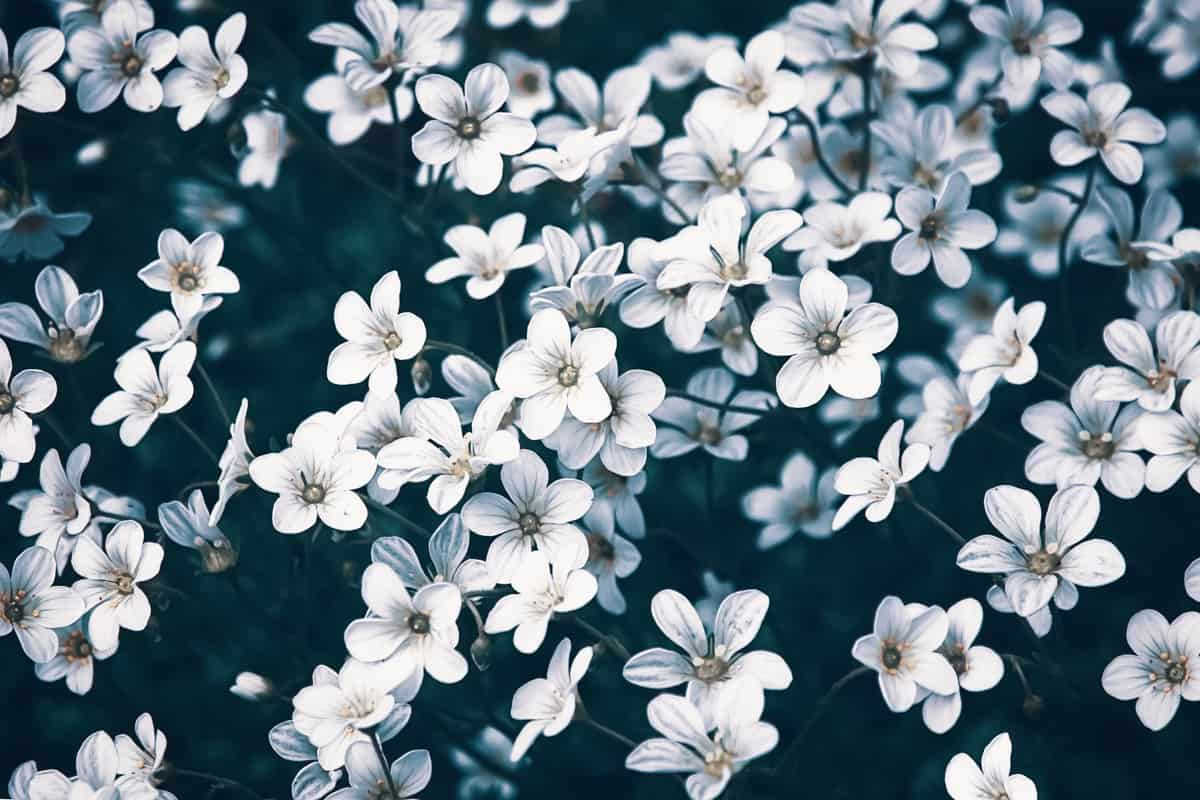Moon gardening is an age-old practice that acknowledges the power and influence of the moon’s phases on plant growth. It seeks to align the planting, growing, and harvesting of crops with the rhythms of the lunar calendar. For centuries, many cultures worldwide have believed in and practiced this form of gardening, using the Moon gardening calendar, or what some refer to as the Moon phase planting calendar.

Does planting by the moon work, you may ask? While scientific evidence may not be conclusive, there’s a myriad of anecdotal evidence from farmers and gardeners who swear by the enhanced crop yields and garden vitality associated with this practice. They attest to the efficacy of choosing the best moon phase to plant a garden or the best moon phase to plant seeds, reaping benefits visible in their abundant, healthy gardens.
Benefits of Moon Gardening and Calendar
Moon Gardening Advantages and Benefits
- Increased Flowering and Fruit Production
- Expect Enhanced Plant Growth
- Controlling Pests
- Cooler Temperatures and Avoiding Sunburning
- Attracting Nighttime Pollinators
- Expect Reduced Water Evaporation
- Unique Aesthetics and Serene Ambiance
Best Plants for Moon Gardening
Moon gardening is not strictly plant-specific; however, some plants thrive better when grown according to lunar cycles. These include root crops like carrots and potatoes that benefit from being planted during the waning moon, when the moon’s light decreases, directing energy to the root system.
Leafy vegetables like spinach, lettuce, and other greens do well when sowed in the waxing phase when the moon’s light increases, promoting leaf growth. The full moon phase encourages planting crops that bear fruits above ground, like tomatoes, peppers, and beans. Also, plants with longer growth cycles, such as trees and perennials, often respond positively to moon gardening practices, displaying robust growth and improved health.
Moon Gardening Planting Calendar and Phases
The Moon gardening calendar is based on the lunar cycle’s four main phases: New Moon, First Quarter, Full Moon, and Last Quarter. Each of these phases influences plant growth differently. The New Moon is when the moon is not visible, signaling a time of new beginnings and an excellent time to plant seeds.
When the moon is half visible, the First Quarter encourages leafy growth, so it’s best to plant leafy vegetables and grains. With its strong gravitational pull, the Full Moon is ideal for planting root crops and perennials. Lastly, when the moon is half visible but waning, the Last Quarter is a time for maintenance tasks such as weeding and pruning.
Lunar Gardening Tips for Better Crop Yields
Observing and understanding the lunar phases and their impact on plant growth can significantly enhance crop yields. In addition to aligning your planting schedule with the lunar calendar, consider other practices like companion planting, crop rotation, and natural pest control. Also, nurturing the soil with organic matter and maintaining the right moisture levels can improve plant health and productivity.
Moon Gardening Techniques for Organic Farming
Organic farming practices work hand in hand with moon gardening techniques. The emphasis on natural, chemical-free methods aligns with the holistic approach of moon gardening. Techniques like composting, mulching, and using natural pest control methods harmonize with the rhythms of the moon and the natural ecosystem, promoting healthy, sustainable growth.
Aligning Garden Tasks With Moon Phases
As mentioned, aligning your garden tasks with the moon phases can optimize the growth and productivity of your garden. The waxing phase (from the new moon to the full moon) is a time of growth and expansion, ideal for planting and grafting. On the other hand, the waning phase (from the full moon to the new moon) is a time for root growth, making it suitable for pruning, weeding, and harvesting.
Moon Gardening Rituals and Traditions
Moon gardening is steeped in rituals and traditions specific to certain cultures or regions. However, common across these practices is the belief in the moon’s influence on the Earth’s natural processes. These rituals may involve planting or harvesting on specific moon phases, performing certain tasks at night under the moonlight, or even using lunar calendars to predict weather patterns.
Using Lunar Cycles for Pest Control in the Garden
The moon’s influence extends beyond plant growth. It also affects the behavior of insects and pests. Pest activity often increases around the full moon so lunar cycles can guide pest control measures in the garden. To keep your garden healthy and thriving, you can use natural pest control techniques like bringing in helpful bugs or using homemade sprays, by predicting pest behavior in advance.
Moon Gardening and the Biodynamic Approach
Biodynamics is a holistic, ecological, and ethical approach to farming and gardening that uses the lunar calendar. Like moon gardening, it regards the farm or garden as a self-contained, self-sustaining ecosystem. Both practices aim to enhance the health and productivity of the system by working in harmony with nature’s rhythms, including the lunar cycles.
Moon Gardening Herbs and Medicinal Plants
Herbs and medicinal plants, like calendula, chamomile, mint, and rosemary, also respond positively to moon gardening practices. These plants, known for their therapeutic properties, often show enhanced potency when harvested during specific moon phases. For instance, harvesting during the full moon can yield more potent medicinal herbs when the plants’ energy is at its peak.
In case you missed it: Market Gardening: for Vegetables, Flowers, Fruits, and Herbs

Moon Gardening and Companion Planting Strategies
Companion planting is another technique that pairs well with moon gardening. This method involves growing certain plants to promote mutual benefits, such as pest control, improved pollination, or enhanced growth. Just as the moon phases can influence individual plant growth, they can also affect the dynamics between companion plants. Knowing when to plant certain combinations according to the lunar calendar can optimize their mutual benefits and overall garden productivity.
Moon Gardening Calendar
| Date | Lunar Phase | Gardening Tasks |
| July 1 | New Moon | Planting seeds of leafy vegetables and annuals. |
| July 2-7 | Waxing Crescent | Good time for planting above-ground bearing annual crops. |
| July 8 | First Quarter | Planting leafy vegetables and grains. |
| July 9-14 | Waxing Gibbous | Good time for planting above-ground bearing annual crops and ornamental flowers. |
| July 15 | Full Moon | Planting root crops, perennials, biennials. |
| July 16-21 | Waning Gibbous | Pruning, fertilizing, and pest control. |
| July 22 | Last Quarter | Maintenance tasks: weeding, composting, pruning, and tilling. |
| July 23-29 | Waning Crescent | A resting period. Good time for soil maintenance and weeding. |
| July 30 | New Moon | Planting seeds of leafy vegetables and annuals. |
The tasks listed above are general suggestions and can be adjusted based on specific regional climate, weather, and growing conditions. The waxing phase (New Moon to Full Moon) is generally considered good for planting, while the waning phase (Full Moon to New Moon) is usually reserved for pruning, weeding, and other maintenance tasks. The calendar above applies to the Northern Hemisphere and might need to be adjusted for those gardening in the Southern Hemisphere. Always remember that local weather and seasonal changes should precede lunar cycles.
In case you missed it: 10 Common Problems With Flowering Camellia Plants: Treatment and Solutions

Conclusion
Moon gardening combines ancient wisdom and observance of natural rhythms to create abundant, thriving gardens. While it may require a bit more planning and observance than other gardening techniques, many find the tangible and intangible rewards well worth the effort. Whether you’re an experienced gardener or a beginner, you may find moon gardening a fascinating and fruitful approach to nurturing your plants and connecting with the natural world.
- Feed Your Flock for Less: Top 10 Tips to Save on Chicken Feed
- Ultimate Guide to Ossabaw Island Hog: Breeding, Raising, Diet, and Care
- Hatching Answers: The Top 10 Reasons Your Chickens Aren’t Laying Eggs
- Eggs and Economics: Breaking Down the Cost of Raising Backyard Chickens
- Defend Your Greens: Proven Methods to Keep Iguanas Out of Your Garden
- Ultimate Guide to Cinnamon Queen Chicken: A Comprehensive Guide for Beginners
- Ultimate Guide to California Tan Chicken: Breeding, Raising, Diet, Egg-Production and Care
- Ultimate Guide to Marsh Daisy Chicken: Breeding, Raising, Diet, and Care
- 10 Types of Chicken Farming Businesses You Can Start for Profits